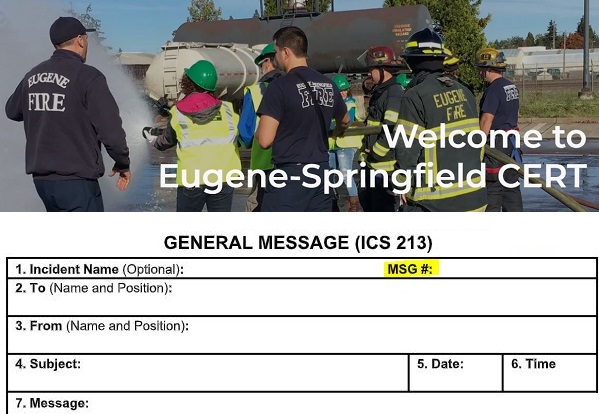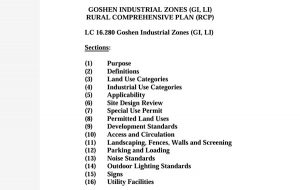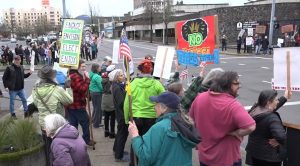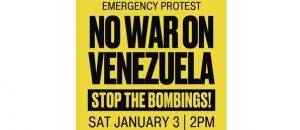Neighbors prepare for all-metro drill Oct. 21
7 min read
Eugene Springfield CERTs (Community Emergency Response Teams) and neighborhoods organize the third annual all-metro exercise. On Saturday, Oct. 21, nearby neighbors will practice helping one another in a disaster.
[00:00:11] Andy Davis: I guess the reason why we started this, this is actually the third year, and we thought, Well, why not do this exercise during the Great American ShakeOut? And just go ahead and piggyback on that, since that is the once-a-year annual drill that is done nationwide.
[00:00:31] And so that’s how that came to be. In the years past, we started very basic. Last year we kicked it up more of a notch and added more of our damage assessment teams within the neighborhood by having them locate simulated disaster buildings and such.
[00:00:50] This year, I’m not going to supply all the participants with either pictures or envelopes with pictures. This year it is on the individual teams to generate their own messages. I was thinking that this would be good for them to do this and not be reliant on me providing something, so that they can bring out their own creative juices, so to speak, and generate their own messages.
[00:01:20] John Q: One Eugene neighborhood will simulate roads that are blocked by downed trees and power lines. David Monk and neighborhood leaders will collect that information on a map, then identify alternate routes.
Andy said the CERTs are excited to work with the city’s new emergency manager.
[00:01:35] Andy Davis: We have a new emergency manager, Sierra Anderson…So, (we’re) very, very excited that she’s on board with the city emergency management and very excited with the help and assistance that she will lend to the CERT program and also the Eugene emergency communication system that is in place that we utilize and use and drill with each year.
[00:01:58] John Q: Community Emergency Response Teams (CERTs) learn to speak the same language as emergency management professionals. They record messages on the same ‘General Message’ forms used by FEMA, the Federal Emergency Management Agency. Speaking about FEMA’s 213 form, Andy Davis.
[00:02:15] Andy Davis: New for this year, we really want to work on the 213 and when we relay that message, that we pass on each of the blocks. The person sending the message would actually say: ‘Block 2: EOC. Block 7:’ and then say, ‘This is an exercise,’ followed by whatever the message would be. When we would go to the subject line, we would say the block number for the subject line.
[00:02:46] Neighborhoods are pretty big. We’ve instituted (on recommendation from the EOC) a message identifier showing the exact location of the damage assessment team that originated the 213. And so we’ve been working on that as well.
What we did in the Northeast Neighbors is, for each of our damage assessment teams, I generated them their own four-letter designator.
[00:03:16] For example, we have a housing association in Harlow which is called Quail Run Housing Association. The designator that we gave Quail Run was ‘H’ for Harlow, ‘N’ for Neighborhood, ‘QR.’ So that damage assessment team’s four-letter identifier, so they would put on their outgoing messages, ‘HNQR.’ Their first message would be 001. Their second message would be 002. Their third message would be 003 and so forth, so forth, all the way as many as they would send.
[00:03:57] For Cal Young, we have a damage assessment team on Lariat Drive, so their four-letter designation is ‘C Y’ for Cal Young and Lariat the ‘L R’, so ‘CYLR’ is that damage assessment team’s four-letter designator, and they would put that on all their messages, followed by 001 or 002 and so forth. So we kind of drilled down that way. And so that message identifier from those damage assessment teams would follow that message all the way to the EOC (Emergency Operations Center).
[00:04:36] John Q: Also new this year: the radio frequencies.
[00:04:40] Andy Davis: Talking with the area frequency manager and discussing that, some comments and some discussions come up, like, ‘Could we not use the EmComm net repeater frequency that we use each week? Could we not use that as an ongoing basis whenever needed?’
[00:05:00] Looking back, we had fires that were in the Southeast District this summer over by Laurel Hill in that area. And so the comment was, ‘Well, why could we not hop on that frequency and start a net and get some inquiries about if there was any needs from people in the neighborhoods?’ And so the word was that, ‘Yes, you can use this frequency at any time.’
[00:05:26] So, it came to be that there’s a discussion, well, why not use this repeater until the repeater is no longer operational? If the repeater is operational, it’s better to have good comms than less good comms with the simplex. So use the repeater as long as it’s operational, and then once it is no longer operational, then we will revert back to the designated simplex frequency for the EOC.
[00:05:57] So that’s where that change came up with the frequency changes. So that we’ll have good comms for this drill coming up with EOC from all the district’s net controls.
[00:06:08] John Q: Andy said volunteers are especially needed in Southwest Eugene.
[00:06:12] Andy Davis: For the southwest district of Eugene, which is all the area west of Chambers and south of 1st Avenue, we have no one that has volunteered to be a ham radio operator for their neighborhoods, or a district net control ham radio operator, or anyone that is willing to start a damage assessment team within their neighborhood.
[00:06:37] So if something happens, major-wise, those people in the southwest district of Eugene, they have no way of getting their emergency needs via radio to the city EOC, because there’s nothing in place, and we have nobody to volunteer there.
[00:06:56] John Q: Andy said we have a lot of great people living in Eugene and Springfield, willing to help people learn more about emergency communications. People like Scott Rosenfeld (N7JI).
[00:07:06] Andy Davis: Scott is part of the Valley Radio Club. He is an excellent ham. He’s an excellent instructor. He also spends a lot of his personal time giving classes and teaching, for individuals to get their ham radio license.
[00:07:22] The ARRL (American Radio Relay League) has designated to him the district we fall under for emergency communications, which is quite impressive because the ARRL only has eight districts across the nation.
[00:07:37] John Q: The CERTs are organizing the communications teams in Springfield.
[00:07:42] Andy Davis: We had a meeting a couple of weeks ago, a couple of Saturdays ago with the Springfield emergency manager. Springfield doesn’t have neighborhood associations like Eugene so we are going to use the Springfield voting wards and I think they have like six or seven voting wards. That’s still in discussion, but they may take each of the wards and have zones.
[00:08:05] But the goal would be: Follow the same model that Eugene has for its emergency communication system in that, if they have zones in each of the wards, there will be a zone net control or a zone ham, that would speak to other hams within that zone. And then it would go to the ward net control and then on up to the Springfield Emergency Operations Center. So that has just started, so we’re going to be working on that and definitely will need some volunteers for Springfield as well for ham.
[00:08:38] And we’re also going to establish ward CERT leaders. And then work to get start developing some damage assessment teams, within each of the wards to communicate to the hands.
[00:08:51] John Q: How can people get involved?
[00:08:54] Andy Davis: We welcome people to volunteer their time and their talents to be a part of this annual event that we try to do. This annual event, I call it kind of like a graduation ceremony of what we do all year long, from after the exercise until the next exercise or drill, as we work in our neighborhoods and our districts and we train in our close-knit portion of our area, that we bring it together for this kind of like a graduation ceremony.
[00:09:26] Go to the Eugene Springfield CERT dot com page, drop us an email saying, ‘Hey, this is my contact information. I am very interested in starting a damage assessment team within my neighborhood.’ Or, ‘I’m a ham radio operator, how can I help?’ We will get back with you, connect you with that district folks, and get you part of the Eugene EmComm.
[00:09:53] You can check out the calendar: On the first Thursdays of each month, there are some kind of a training or informational topic. This year, we had six Thursdays that were for CERTs only. It was kind of like follow-on training exercises to build upon what they learned through the CERT Basic (Training). And then the other six Thursdays were open to the public and those Thursdays were alternated: One for CERT, the next month would be public, then CERT and public and so forth.
[00:10:24] First Thursday in November, we are working on having the Egan Warming Center folks to come in, to talk about Egan Warming and those that want to participate in something like that. So that will be available for the public and that’s from 6 p.m. to 8 p.m. at 2nd Avenue & Chambers Street, the fire training center. That’s a heads-up coming up.
[00:10:47] John Q: Area volunteers will practice a large-scale drill across all of Eugene and Springfield on Saturday, Oct. 21. Get involved at the CERT website or contact your local neighborhood association.




